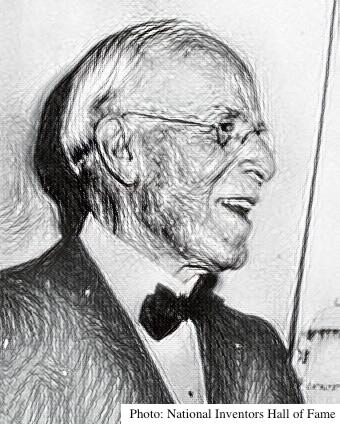William Burton
The crude oil upon which we depend for so many types of fuel and other products does not come out of the ground ready for all of its various uses. It must be converted into simpler molecules via processes known in the petroleum industry as “cracking.”
Cracking processes break the complex, organic molecules found in petroleum down into simpler, more useful byproducts and can be achieved by applying heat, steam, heavy pressure, or a chemical catalyst to the oil.
One of the most important forms of cracking, catalytic cracking, was invented by William Meriam Burton in 1912. Burton’s is known as the first commercially successful method for cracking crude oil into gasoline and related products. His work made it possible for oil companies to more than double the gasoline yield from crude oil. His process was adopted as a standard among American oil companies as the industry exploded in the early part of the 20th century.
Born in Cleveland, Ohio, on November 17, 1865, Burton earned a BA from Western Reserve University in 1886 and completed a PhD in Chemistry at Johns Hopkins University in 1889. From there, he took a job as a chemist with Standard Oil Co. in Cleveland. A year later, he transferred to Standard Oil of Indiana.
At the turn of the century, oil companies distilled crude oil to produce gasoline to fuel machinery and the few automobiles that were on the roads. As the automobile industry began to boom, however, it was clear that these oil firms would no longer be able to satisfy the needs of drivers with the processes they had grown accustomed to using.

Burton was working as general manager of manufacturing for Standard Oil in 1909 when he and his team embarked on a research project to try and solve the problem of increasing the yield of gasoline from crude oil. Working with chemist Dr. Robert Humphreys, he created a process where gas oil would be held inside a container and heated to an extremely high temperature until it reached over 700°F. The process resulted in the desired level of cracking and was quickly adopted as a standard in the industry. The Burton process, as it was called at the time, allowed oil companies to save more than a billion barrels of crude oil during its first 15 years of use. A U.S. patent was issued for the process in 1912.
Meanwhile, Burton was elected as director of Standard of Indiana in 1911. He became vice president of the company in 1915, and in 1918, he was named president. He continued to serve as president of Standard of Indiana until he retired in 1927.
For his achievements, Burton was awarded the Willard Gibbs Medal by the American Chemical Society in 1918. He was honored with the Perkins Medal from the Society of Chemical Industry in 1921. Burton died on December 29, 1954 at the age of 89. In 1984, he was posthumously inducted into the Inventors Hall of Fame.


